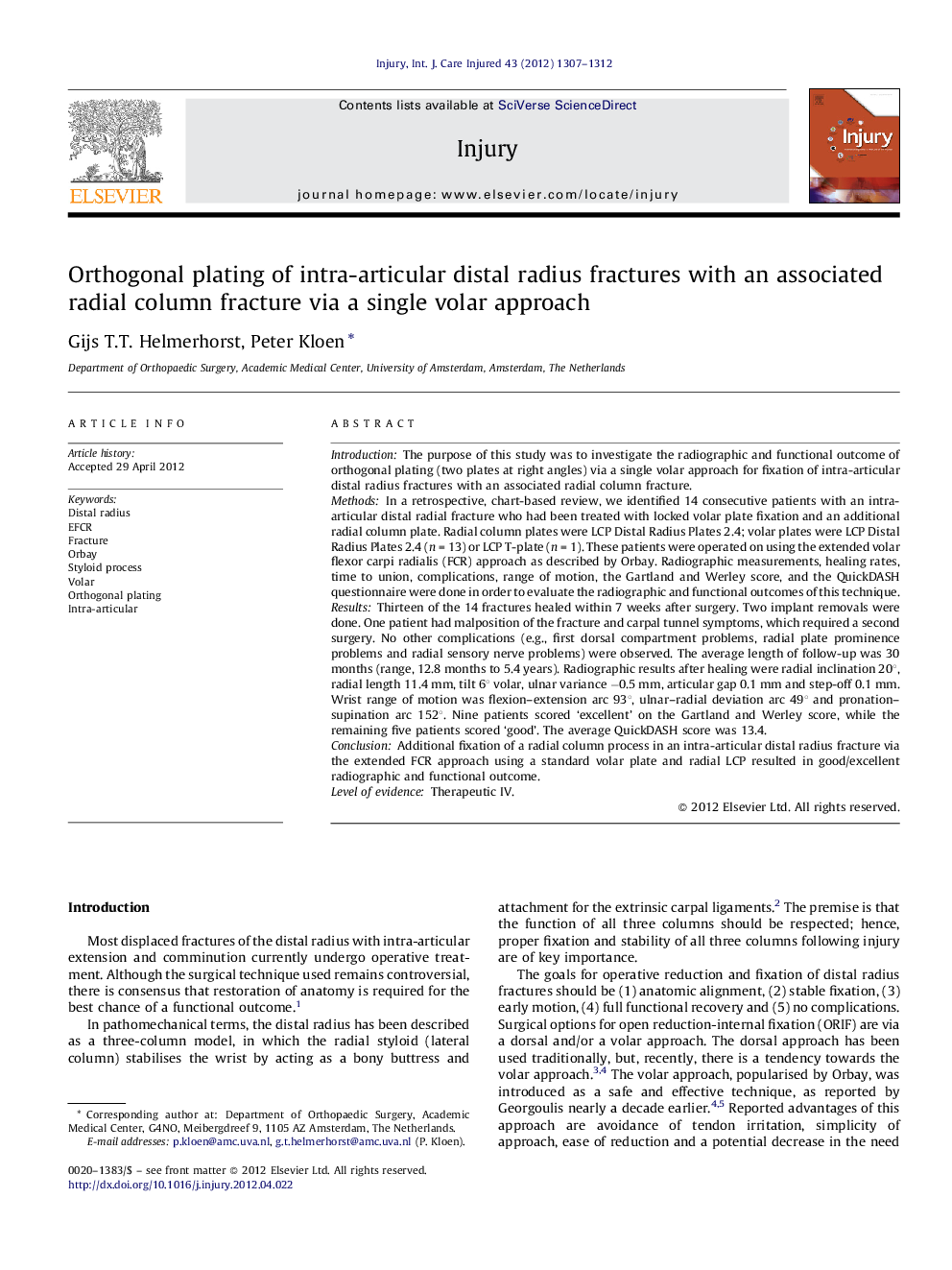| کد مقاله | کد نشریه | سال انتشار | مقاله انگلیسی | نسخه تمام متن |
|---|---|---|---|---|
| 3239573 | 1206011 | 2012 | 6 صفحه PDF | دانلود رایگان |

IntroductionThe purpose of this study was to investigate the radiographic and functional outcome of orthogonal plating (two plates at right angles) via a single volar approach for fixation of intra-articular distal radius fractures with an associated radial column fracture.MethodsIn a retrospective, chart-based review, we identified 14 consecutive patients with an intra-articular distal radial fracture who had been treated with locked volar plate fixation and an additional radial column plate. Radial column plates were LCP Distal Radius Plates 2.4; volar plates were LCP Distal Radius Plates 2.4 (n = 13) or LCP T-plate (n = 1). These patients were operated on using the extended volar flexor carpi radialis (FCR) approach as described by Orbay. Radiographic measurements, healing rates, time to union, complications, range of motion, the Gartland and Werley score, and the QuickDASH questionnaire were done in order to evaluate the radiographic and functional outcomes of this technique.ResultsThirteen of the 14 fractures healed within 7 weeks after surgery. Two implant removals were done. One patient had malposition of the fracture and carpal tunnel symptoms, which required a second surgery. No other complications (e.g., first dorsal compartment problems, radial plate prominence problems and radial sensory nerve problems) were observed. The average length of follow-up was 30 months (range, 12.8 months to 5.4 years). Radiographic results after healing were radial inclination 20°, radial length 11.4 mm, tilt 6° volar, ulnar variance −0.5 mm, articular gap 0.1 mm and step-off 0.1 mm. Wrist range of motion was flexion–extension arc 93°, ulnar–radial deviation arc 49° and pronation–supination arc 152°. Nine patients scored ‘excellent’ on the Gartland and Werley score, while the remaining five patients scored ‘good’. The average QuickDASH score was 13.4.ConclusionAdditional fixation of a radial column process in an intra-articular distal radius fracture via the extended FCR approach using a standard volar plate and radial LCP resulted in good/excellent radiographic and functional outcome.Level of evidenceTherapeutic IV.
Journal: Injury - Volume 43, Issue 8, August 2012, Pages 1307–1312